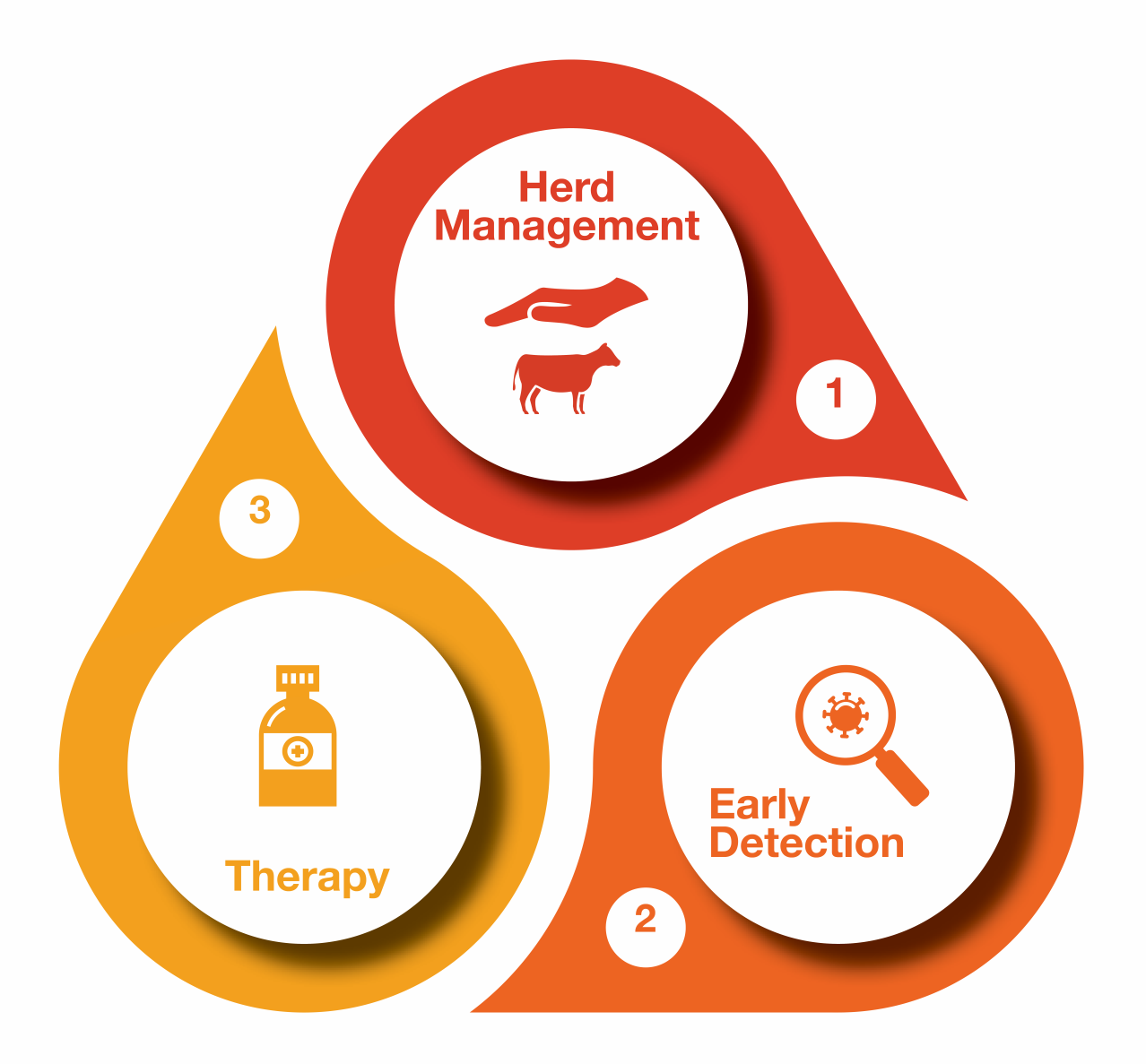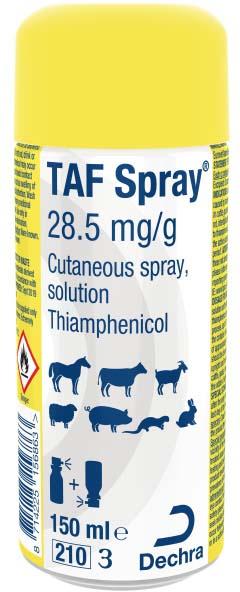Lameness affects up to a quarter of European dairy cows, making it one of the most pressing welfare and economic issues after mastitis. Beyond pain, it reduces milk yield, fertility, and herd longevity, creating significant financial losses for farmers. Discover how early detection, effective treatment, and proactive prevention can transform herd health and profitability—read more to take action against lameness today.
Lameness in cattle
Lameness in cattle is a common, painful health problem that affects animal welfare and productivity. Significant lameness decreases the amount of daily dry matter intake by the animals ultimately resulting in lower milk yield. This effect was even more notable in heifers over multiparous cows.1
But besides milk loss, decreased reproductive efficiency, treatment and labour costs are affecting the economic performance of the entire farm. Furthermore, lameness tends to alter lying behaviour increasing the risk of subsequent illness and is regarded as one of the main reasons for cows pre-emptively leaving the herd.1
Articles
Impact of lameness on cow welfare add
A holistic approach to lameness and foot lesions in dairy cows add
Lameness in cattle costs farmers hundreds of dollars per case and severely impacts cow welfare, yet it often goes unnoticed until it becomes chronic. This guide from Ghent University outlines essential strategies for prevention, early detection, and effective treatment of foot lesions. Dive in to learn practical steps that protect herd health, improve recovery rates, and safeguard farm profitability.
Integrated approach
Dechra supports you with an integrated approach where good husbandry, early detection and correct therapy keep your herds moving.

1 Herd management add
With the transition towards larger farms and Comfort Zone Free Stalls infectious lameness diseases like digital dermatitis have propagated as well. Ensuring good husbandry conditions, like comfortable bedding, flooring systems and manure removal are first line preventative actions.
2 Detection add
Regular hoof trimming by a professional helps with detecting any problems early. Internal and external biosecurity is the key to success: be aware of integrating infected animals into the herd. Suitable cleaning facilities for boots and tools not only keep your animals safe, but also keep the workforce happy.
3 Therapy add
Correct treatment of infectious lameness must include proper and regular hoof trimming. Find out which hoof trimming intervals are meeting the individual farm's needs. After proper cleaning and trimming of infectious lameness cases treat the affected feet with an antibiotic spray. A bandage may be applied to keep the animal’s foot clean and protected.
Lameness is not a single disease, but a clinical sign of pain related to the locomotor system. In most cases, hoof lesions are the main reason cows are limping. Based on their aetiology hoof lesions are divided into infectious and non-infectious lesions. The most common infectious hoof lesion is digital dermatitis. Whereas sole ulcers, haemorrhages and white line disease are the most common non-infectious hoof lesions in dairy cattle.
The prevalence of lameness, despite increased awareness around economic impact, is still extremely high.1,2 Factors which may be influencing lameness can be categorized into 3 groups: environmental factors, herd management and factors related to the individual cow.
Correct treatment of a lame cow must include a curative hoof trim first. In the hoof trimming chute the affected limb can be thoroughly inspected allowing for an accurate diagnosis. Anti-inflammatory drugs and local anaesthetics can be administered for immediate and post trim pain relief.3,4 Infectious claw diseases can be treated either locally and/or systemically bearing in mind the responsible use of antibiotics and the prognosis of the individual case. After local treatment of the claw a bandage should be applied for a couple of days to keep the animal’s foot safe and protected.
Whilst the cow is in the hoof trimming chute, prophylactic hoof trimming of the other limbs is advised to make sure there are no hidden or emerging lesions on the other feet. Regardless of cause, lame animals should be separated from the herd and provided with comfortable bedding. Lameness can be controlled by regular hoof trimming, ensuring proper biosecurity measures (infectious diseases), balanced ration and providing a proper comfort to the cows (enough stall space, right flooring and bedding).
References add
-
M. Garvey, 2022: “Lameness in Dairy Cow Herds: Disease Aetiology, Prevention and Management”; Dairy; 3, pp: 199-210. doi: https://doi.org/10.3390/dairy3010016
-
M. Hoedemaker et al., 2020: “Abschlussbericht Tiergesundheit, Hygiene und Biosicherheit in deutschen Milchkuhbetrieben – eine Prävalenzstudie (PraeRi)”; https://ibei.tiho-hannover.de/praeri/pages/1
-
J. P. Wilson, N. J. Bell, 2022: “Use of NSAIDs in the management of lameness in dairy cattle”; Livestock; 27(6). doi: 10.12968/live.2022.27.6.254
-
D. Nagel et al., 2016: “The use of meloxicam oral suspension to treat musculoskeletal lameness in cattle”; Veterinary Medicine: Research and Reports”; 7, pp:149-155. doi: http://dx.doi.org/10.2147/VMRR.S112200



